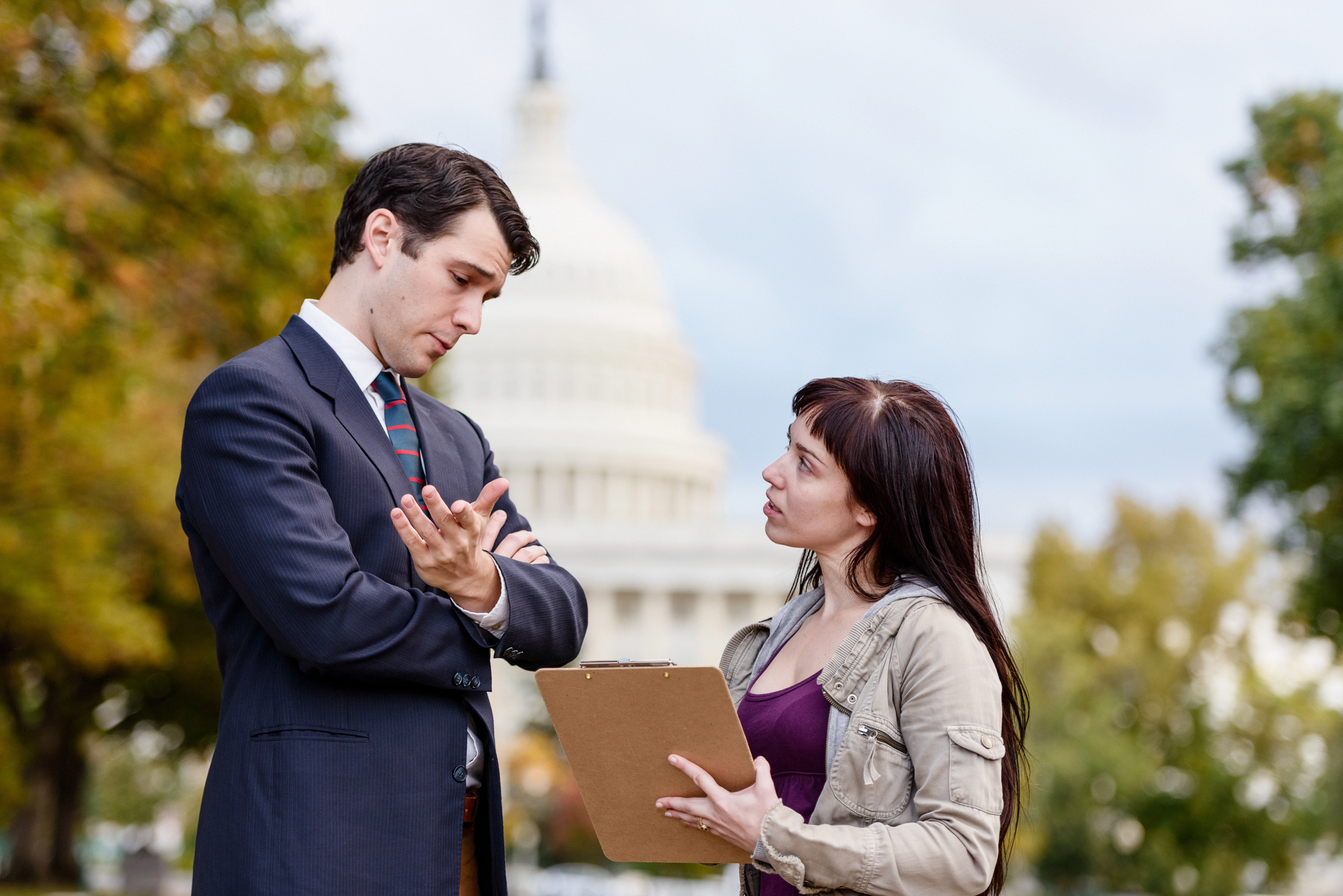Canvassing in politics refers to direct contact with individuals, such as through door-to-door visits or phone calls, to encourage support for a candidate or gather voter opinions. This method is a core approach for campaigns to connect with voters, share information, and influence turnout.
Many recognize canvassing as a way for candidates and organizations to gather feedback, answer questions, and understand public concerns firsthand. There are several ways to canvass, including in-person conversations and digital outreach.
Key Takeaways
- Canvassing involves direct voter contact for political purposes.
- Multiple canvassing techniques exist, including face-to-face and remote methods.
- Rules and effectiveness can vary based on location and campaign goals.
Understanding Canvassing in Politics
Canvassing refers to direct contact with voters, often done by political parties, campaign staff, or volunteers. It is a central strategy in elections, used to identify support, persuade undecided voters, and gather critical feedback.
Definition and Purpose
In politics, canvassing is the practice of reaching out directly to individuals through door-to-door visits, phone banking, or street interactions. Its main purpose is to connect candidates or political parties with voters by providing information, discussing issues, and hearing concerns. This direct voter engagement helps campaigns collect data on public opinion, voter preferences, and turnout likelihood.
Successful canvassing can increase awareness of candidates or party platforms. It plays a central role in strengthening voter relationships and reminding supporters about election days. Canvassing also helps identify supporters for future campaign mobilization efforts.
History and Evolution
Canvassing has been used by political actors for centuries. Historically, early political campaigns relied on face-to-face engagement within local communities due to the limited reach of newspapers and radio. Handbills, personal visits, and speeches in public squares made up the bulk of these early efforts.
With technological advancements, canvassing expanded to phone calls and later, digital outreach via texts, emails, and social media platforms. While the format has shifted, direct interaction remains an important part of modern political strategy. During major elections, parties combine traditional door-knocking with virtual communication to reach a wider group of voters.
Key Stakeholders Involved
Several groups are directly involved in political canvassing. These include party members, campaign staff, paid canvassers, and community volunteers. Each plays a role in managing operations, conducting outreach, or providing training.
Political parties coordinate efforts, set targets, and provide resources. Campaign managers organize logistics, track progress, and handle voter data securely. Volunteers and paid canvassers carry out interactions, deliver informational materials, and note responses. In some cases, third-party organizations assist, especially in large-scale national or regional elections.
Types of Canvassing Methods
Political campaigns rely on several direct outreach methods to engage voters. Common approaches vary in approach, communication style, and the tools canvassers use to connect with individuals.
Door-to-Door Canvassing
Door-to-door canvassing is a traditional method where canvassers visit homes in person to speak with voters. This strategy is valued for its face-to-face interaction, which helps build trust and memorable connections. It enables campaigns to answer questions, discuss policy positions, and collect voter feedback immediately.
Canvassers often use scripts and digital apps to record voter responses and update campaign databases. It is particularly effective for gathering voter ID information, persuading undecided voters, and delivering campaign materials directly. Safety precautions are important, with guidelines given for approaching homes and interacting with residents respectfully.
Campaigns may prioritize specific neighborhoods using voter data, focusing on areas with high turnout potential. Door-to-door canvassing demands time and people, making its organization a significant task for campaign managers.
Phone Banking and Digital Outreach
Phone banking involves calling voters to engage them in conversation about candidates, issues, or upcoming election dates. Volunteers typically follow prepared scripts to maintain consistency and accuracy in messaging. Technology allows remote phone banking, enabling canvassers to participate from their homes.
Digital outreach expands beyond phone calls. Text messaging, emails, and targeted social media communication form a core part of modern political canvassing. These approaches reach voters who are difficult to contact in person or by phone.
Automated systems can help campaigns manage large volumes of contacts quickly, but campaigns must comply with legal regulations regarding consent and data privacy. Digital methods allow targeted outreach based on demographics and voting history, though maintaining personal engagement is still a challenge.
Event-Based Engagement
Event-based engagement brings potential voters and canvassers together in physical or virtual group settings, such as town halls, local meetings, or community gatherings. These events create opportunities for candidates and their teams to interact with multiple residents at once.
Canvassers use these occasions to register voters, distribute literature, and facilitate question-and-answer sessions. Large events often attract media attention, amplifying campaign messaging. Virtual events use video conferencing platforms to extend reach to those unable to attend in person.
Event-based engagement enables campaigns to foster dialogue, correct misinformation, and energize supporters. Follow-up after events, such as personalized outreach to attendees, helps campaigns convert initial contact into ongoing relationships with voters.
Role of Canvassing in Elections
Canvassing directly connects campaigns with registered voters, aiming to boost participation and shape opinions on candidates. It helps campaigns identify supporters, encourage turnout, and address undecided individuals throughout the election cycle.
Mobilizing Registered Voters
Campaigns use canvassing to reach registered voters through methods such as door-to-door visits and phone calls. This direct contact raises awareness of the election date, polling locations, and voting requirements. Volunteers and staff remind voters of upcoming deadlines and help them resolve any issues, like missing information on registration rolls.
Field data collected during canvassing allows campaigns to identify which voters have already cast a ballot or need follow-ups before Election Day. In competitive elections, these reminders increase turnout by making voting more accessible and addressing questions or obstacles.
Personal attention shows registered voters their voice matters, increasing the likelihood they will go to the polls.
Influence on Election Day Outcomes
Canvassing impacts outcomes by driving voter turnout and collecting real-time feedback. Campaign workers often note which voters have been contacted and report back to their teams, sharpening the focus for final efforts.
On Election Day, teams may target individuals who haven’t voted yet, using updated lists to prioritize outreach. Rapid follow-up with likely supporters can make a difference in races that are decided by slim margins. This targeted approach reduces wasted effort and maximizes effectiveness.
Election officials may also use information from canvassers to update voter rolls, contributing to more accurate election results and helping to resolve any issues at the polls.
Candidate Support and Persuasion
Effective canvassing provides campaigns a direct line to voters for persuasion and candidate support. Canvassers can explain candidate positions, answer questions, and address concerns, often leading to more informed voting decisions.
According to some research, personal conversations during canvassing outperform most forms of mass communication in changing minds. Canvassers are usually trained to identify undecided voters and offer information tailored to specific concerns.
Persuasive efforts during canvassing don’t just boost name recognition—they also help solidify new support, encourage fence-sitters, and prompt supporters to talk with friends and family, expanding a candidate’s reach.
Processes and Techniques Used by Canvassers
Political canvassing relies on reaching the right voters, gathering accurate information, and supporting voter participation. Canvassers follow practical steps to make meaningful contact and document voter engagement.
Targeting and Access to Voters
Canvassers begin by selecting which voters to contact. This targeting process uses registered voter lists, maps, and demographic data. Campaigns decide if the focus is persuading likely supporters or identifying undecided voters.
Access depends on location and method. Canvassers might go door-to-door, call voters by phone, or use online tools. Priority neighborhoods or precincts are chosen for field work. Timing matters: evenings and weekends see more voters at home, increasing response rates.
Safety is part of the process. Canvassers work in pairs, wear campaign badges, and follow local ordinances. They prepare scripts, printed walk sheets, or smartphone apps to streamline their outreach and avoid duplicated contact attempts.
Collecting Data and Feedback
During each conversation, canvassers gather details such as voter preferences, issues of concern, and contact information. This information is logged on paper or directly into a digital database. The quality of data influences future campaign strategy.
Responses to candidate policy positions or ballot questions are noted. Canvassers ask if the voter plans to go to the polls, needs help with absentee ballots, or wants further information. The campaign may flag strong supporters to encourage turnout later.
Feedback helps campaigns address local worries or misinformation. Patterns in responses help refine messages for phone calls, mailers, or digital ads over the rest of the election cycle. Consistent data recording keeps efforts effective and avoids duplicated outreach.
Ensuring Ballot Access
Canvassers provide information about polling places, voting times, and relevant identification requirements. They clarify how voters can register if they are new or recently moved. This work helps more people participate and fewer encounter barriers at the polls.
For voters needing assistance—such as elderly residents or those with disabilities—canvassers help arrange transportation or direct them to vote by mail if available. Some campaigns monitor for problems at polling stations and report accessibility issues to local officials.
Answering routine questions about ballots, deadlines, or candidate backgrounds builds trust with voters. Reliable guidance lets people understand what they need to bring, when they can vote, and how to fix common registration problems before Election Day.
Legal and Regional Considerations
Political canvassing activities are subject to different laws and requirements depending on state and local jurisdictions. In Pennsylvania, specific guidelines exist for canvassers regarding permitted activities, absentee ballot handling, and voter rights.
Local Laws and Pennsylvania Regulations
Local ordinances often set rules for canvassing, such as permitted hours, identification requirements, and restrictions on trespassing. Cities or municipalities may require permits or advance notice before canvassing starts. Pennsylvania law permits political canvassing, but individuals must respect posted “No Soliciting” signs and private property boundaries.
Canvassers in Pennsylvania are allowed to distribute campaign materials, ask questions to voters, and support registration. However, blocking entrances, aggressive behavior, and harassment are prohibited under state law. Some municipalities may also regulate noise or the size of campaign signs used during canvassing. Compliance with both state and local guidelines helps prevent legal issues and complaints.
Absentee Ballots and Voter Rights
Pennsylvania permits the use of absentee ballots for those who qualify, such as due to illness, disability, or absence from the district on Election Day. Canvassers can provide information about how to request, complete, and return absentee ballots, but they must avoid handling ballots unless legally authorized.
State law prohibits canvassers from pressuring voters about their choices or interfering with ballot secrecy. Voters’ rights include the ability to request assistance if needed, with restrictions on who can legally assist. Intimidation or attempts to collect completed ballots without authorization can result in criminal charges. Compliance with these rules protects voter privacy and maintains election integrity.





